Post Nine - Belgium and the Netherlands
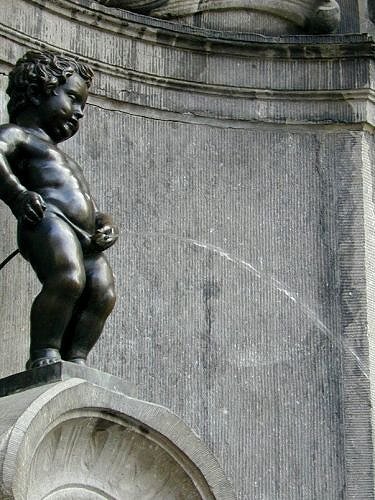 The Piss The PissNormally I seek out the clichéd artworks in cities in order to take photos of the masses of tourists surrounding them (like I did at the Mona Lisa in Paris). This famous statue of a young boy peeing that has somehow become the symbol of Brussels is actually a pretty cool little piece (so to speak). As we've crossed Europe, we've seen fountains with water squirting out of mouths, breasts, whale spouts, scallops and plenty of little boys peeing. I would guess that it's our puritan sensibilities that cause us to titter at seeing such a normal act displayed as public art. The Belgians have no problem with this little statue's popularity. In fact, they dress him up in various costumes that people send from all over the world. One week he is a racecar driver, and the next he will be dressed like Elvis. I did feel a little foolish jostling for a spot to take a photo of him. -- Scott |
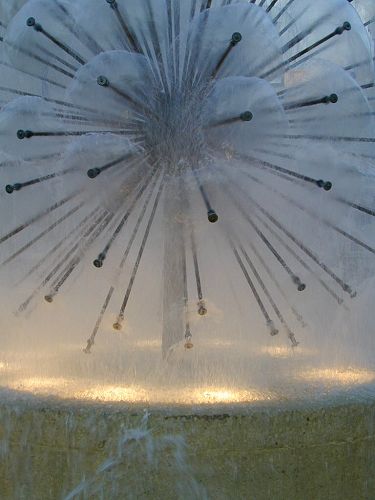 Champagne Fountain Champagne FountainThis picture was taken in Reims, Champagne, but it's in this section because it reminds me of Brussels. Why? Well, we thought that Brussels would be just a couple of hours by train from this fount. Silly, silly us. The two towns seemed so close, and yet they were so very, very far. Most people don't stop in Champagne on their way to Brussels from Paris, and the train schedules reflected that. To avoid backtracking to Paris, we had to connect three times in remote, sleepy little towns. It rained the entire day, sideways, the drops relentlessly searching us out as we huddled under the covered waiting areas next to the tracks. When we finally arrived, we checked into a hotel, showered and changed, and headed straight back out for dinner and Belgian beer, a reward well worth the effort. -- Karen |
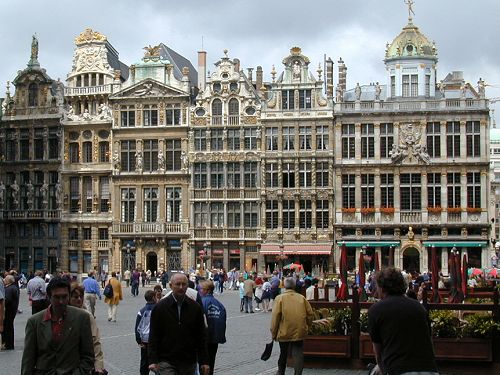 Brussels BrusselsCentral Brussels still has some beautiful historic buildings, and an impressive central square (pictured here) that's surrounded by the one-time guild houses that date back hundreds of years. But as the seat of the European Union, Brussels definitely is a modern, working city, with a businesslike vibe. This is not a city that lives and dies by its tourism. Tourists are everywhere, but they come and go quickly; a day or two is enough to see the sites. -- Karen |
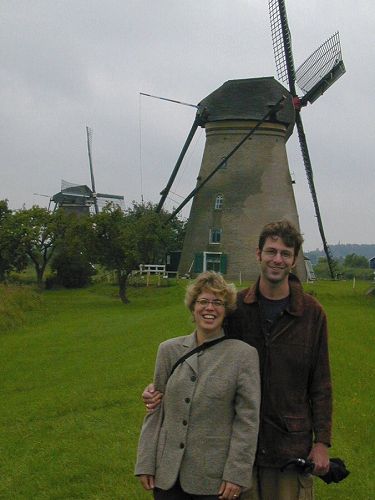 Anke and Bas Anke and BasLast winter, we met Anke and Bas in Guanajuato, Mexico, where we attended Spanish language school together. Months later, we showed up on their doorstep, and they took us on a whirlwind tour of the Netherlands, from the Nijmwegen on the eastern border to the North Sea. We picked this photo so you could see their house…just kidding, Anke and Bas! This is a park and nature preserve where you can visit working windmills and better understand how they were used to drain land for agriculture. -- Karen |
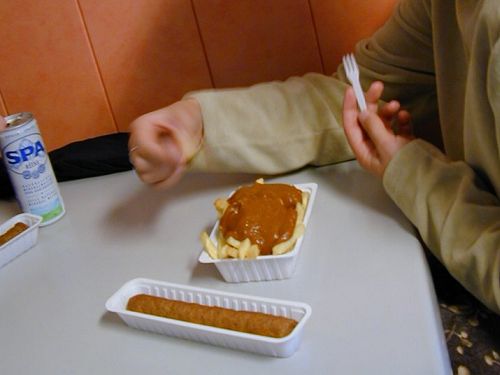 Netherlands Cuisine Netherlands CuisineYou are looking at two delicacies of Dutch cuisine: frikandel (hope I've spelled that right) and French fries with peanut sauce. This, my friends, is post-bender food, best savored after a night of carousing over beers with your favorite Dutch men and women (though it can be enjoyed nearly any time of day or night, as shops selling such fare are normally open until early morning). We all know and love French fries; the peanut sauce appears to be a holdover from the Netherland's colonization of Indonesia. Ideally, it's served hot and in large quantity over the fries, as shown here. Frikandel is the Dutch equivalent of an Oscar Meyer wiener. These tasty, deep-fried treats are similar to our ballpark cuisine in more ways than one. Apparently made with a variety of meat "parts", they are exceedingly salty, very tasty with beer, and cheap. You can order them plain or indulge in a "frikandel special," where the sausage is split open, filled with mayonnaise (I am not making this up), and sprinkled with chopped onions. And you find yourself reaching for the Rolaids an hour after you eat them. -- Karen |
 Dutch Windmills Dutch WindmillsWe met Anke and Bos at our language school in Mexico. They, like us, had left their jobs, stored their things, and quit their jobs to travel around the world. When they heard we were eventually headed to Europe they urged us to stop by Helmond in the Netherlands and they would show us something of their country. Driving with them toward the coast, as we passed our first windmill Karen and I excitedly pointed it out to them. They laughed as we continued to point out the many windmills along the side of the road. What we didn't know is that they were taking us to Kinderdyke - an area that has a number of the old windmills that still work. Rather then being 'mills' to grind grain, these help pump the water out of the low-lying areas and into the dykes that contain it. They were very cool, and very Dutch. -- Scott |
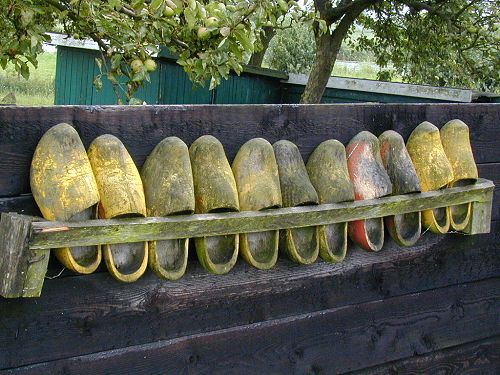 Dutch Slippers Dutch SlippersYep, these are wooden shoes. Of course, everyone in Holland wears them along with those funny hats while they are sticking their fingers in the dams to keep the water from rushing in. Well, at least they are photogenic. -- Scott |
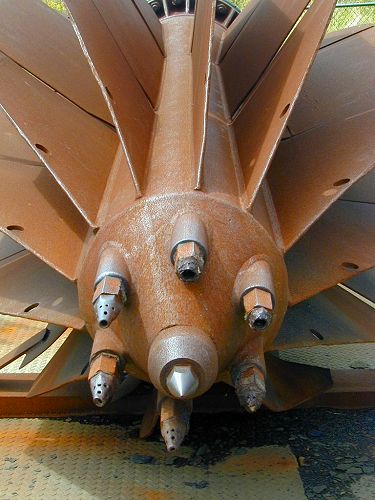 The Delta Project The Delta ProjectThe name for the Netherlands translates in many languages to the 'low-lands'. Almost half of the country lies below sea level and is protected from the sea by an intricate system of dams, locks and dikes. After a devastating flood in 1953, the Netherlands started a monumental project (the Delta Project) to block off large parts of their estuaries with dams that could be opened to allow the tide through but closed in the event of stormy weather. This project was done on the scale of the moon landings. At a cost of billions of guilders it took almost 30 years to complete and is the most impressive engineering I've ever seen. This photo shows the end of one of the rods they used to vibrate and compact the sea floor. -- Scott |
Next Up: Amsterdam to Hamburg
Copyright 2001
Scott & Karen Semyan